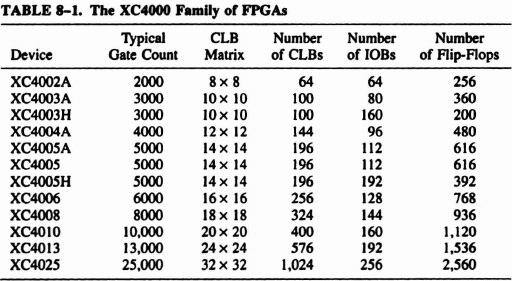8.3 FIELD-PROGRAMMABLE INTERCONNECT
This section is concerned with a simpler concept, that of field-programmable interconnect, that is, an FPGA without its on-chip logic. This type of chip allows much more flexibility in assembling systems composed of multiple FPGA chips, possibly with other components such as random-access memory. The chips required are conceptually crossbar switches, that is, they permit any signal to enter the chip and be broadcast to any number of other signal pins. This additional flexibility in interconnection from chip-to-chip gives flexibility in partitioning designs across multiple FPGA chips, and is important in keeping down the cost of design iterations at the printed-circuit-board level. It also has practical advantages in locating errant signals at debugging time.

8.3.1 Aptix Field-programmable Interconnect
The System Verification Bottleneck Over the last several years boardlevel system complexity has dramatically increased, largely due to the fast-paced evolution of advanced integrated circuits. Such advances in silicon inevitably provide products with improved function, performance, integration, and cost. However, they have also forced the system verification process to become a significant bottleneck in the development cycle. As verification methodologies, printed-circuit-board (PCB) prototyping and simulation both have their benefits, but ...
Get Field-Programmable Gate Arrays: Reconfigurable Logic for Rapid Prototyping and Implementation of Digital Systems now with the O’Reilly learning platform.
O’Reilly members experience books, live events, courses curated by job role, and more from O’Reilly and nearly 200 top publishers.

